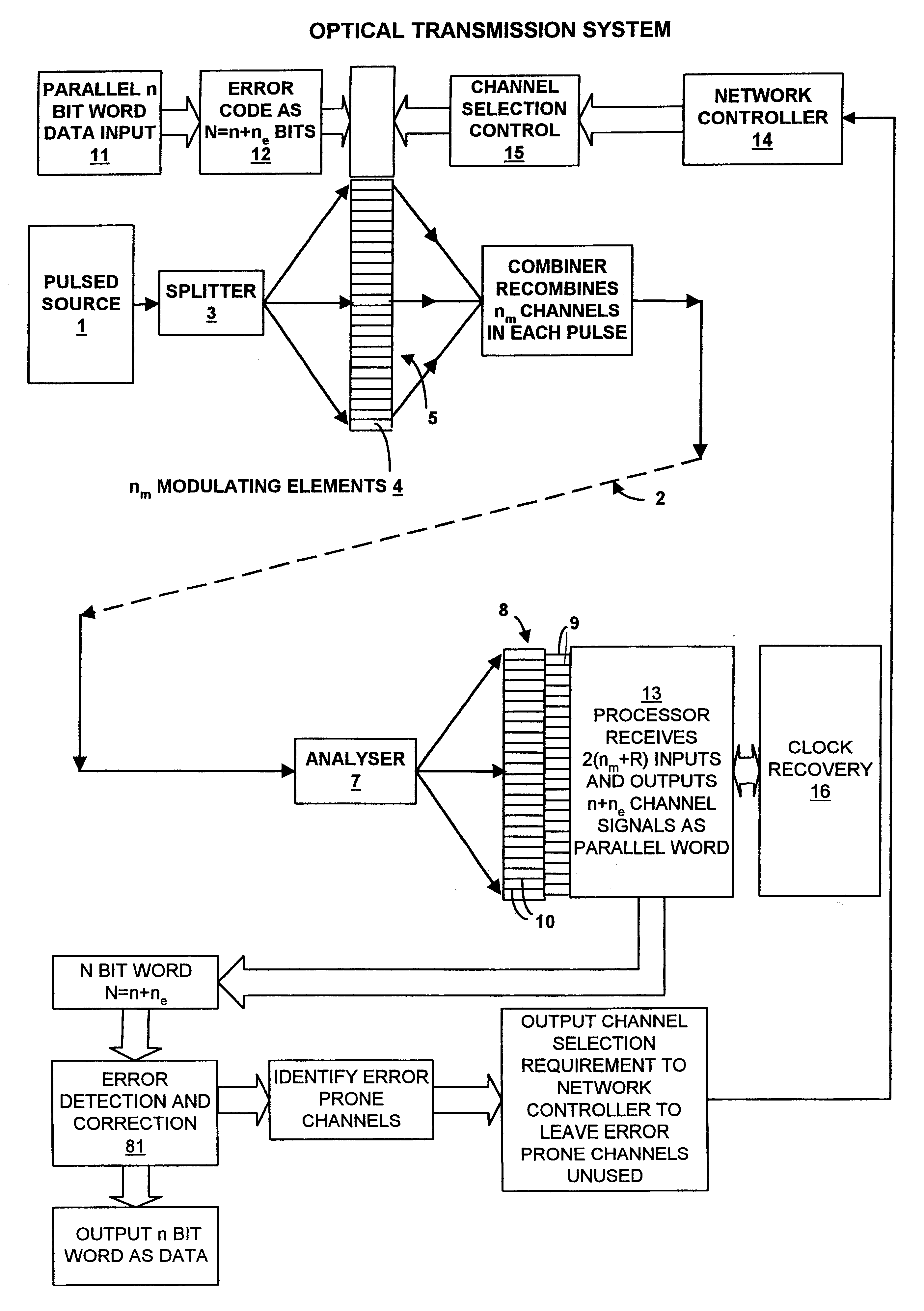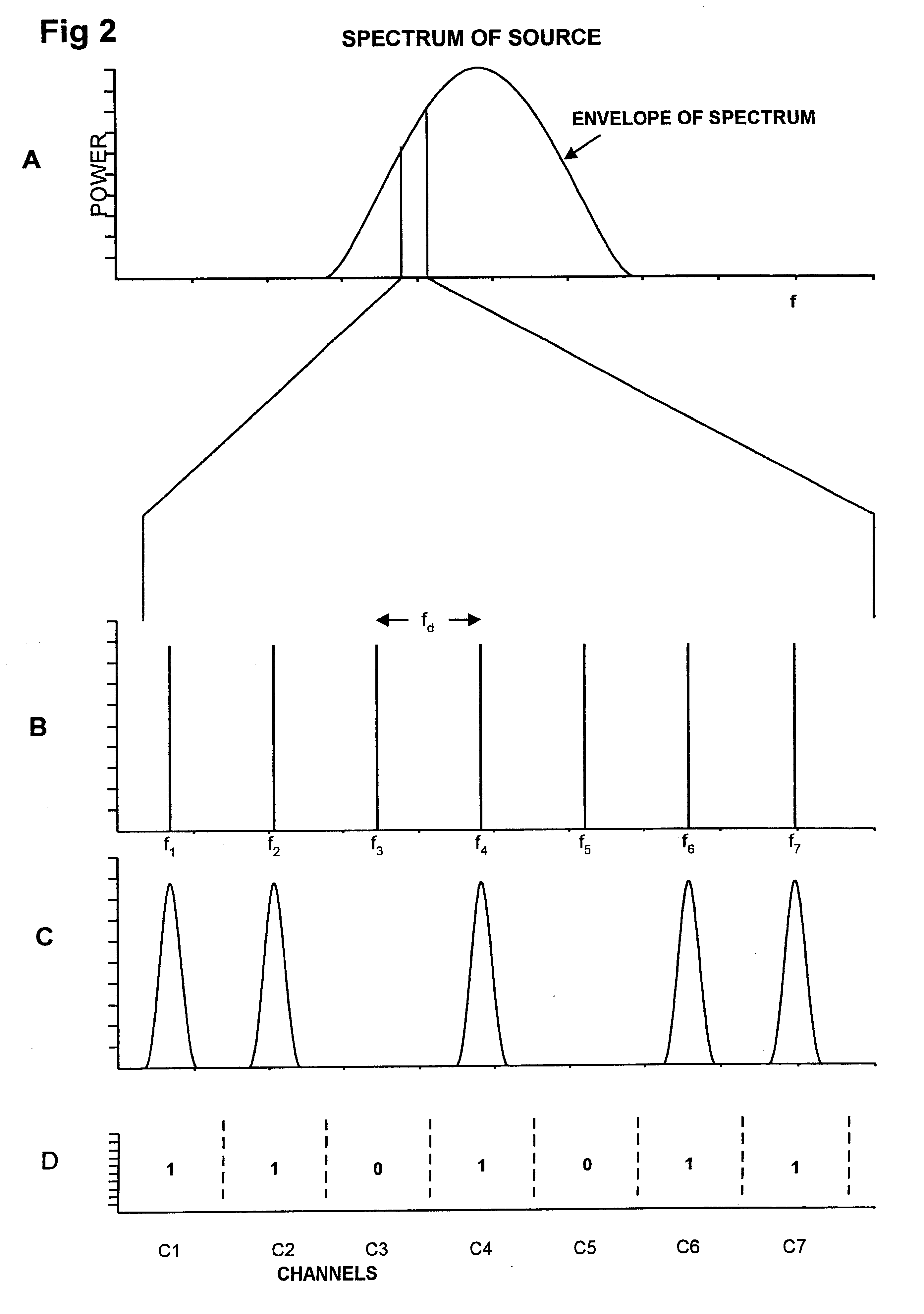Multiplexed transmission of optical signals
a multi-channel transmission and optical signal technology, applied in the direction of transmission monitoring, coding, instruments, etc., can solve the problems of increasing the number of channels per puls
- Summary
- Abstract
- Description
- Claims
- Application Information
AI Technical Summary
Benefits of technology
Problems solved by technology
Method used
Image
Examples
Embodiment Construction
FIG. 1 shows schematically a high-capacity optical transmission system in which optical pulses from a single laser source 1 having a relatively broad bandwidth of 16 nm are subject to a multiplexing process enabling each pulse to carry a large of number of channels. In the present context, the number of channels is used to denote signal carrying capacity of an optical network 2 over which the pulses are transmitted, and, typically, each channel can carry one bit of information per pulse. A data input 11 allows the input of a parallel n bit word, after suitable processing, to be encoded upon the optical pulse by means of the modulator array 5. Such processing may for example include error coding in a forward error coding unit 12 which adds the parity bits to the parallel word.
Pulses from the source 1 are divided by a splitter 3 in a manner suitable for presentation to modulating elements 4 of a modulator array 5. One possible example of a splitter 3 would be a wavelength dispersive e...
PUM
 Login to View More
Login to View More Abstract
Description
Claims
Application Information
 Login to View More
Login to View More - R&D
- Intellectual Property
- Life Sciences
- Materials
- Tech Scout
- Unparalleled Data Quality
- Higher Quality Content
- 60% Fewer Hallucinations
Browse by: Latest US Patents, China's latest patents, Technical Efficacy Thesaurus, Application Domain, Technology Topic, Popular Technical Reports.
© 2025 PatSnap. All rights reserved.Legal|Privacy policy|Modern Slavery Act Transparency Statement|Sitemap|About US| Contact US: help@patsnap.com



